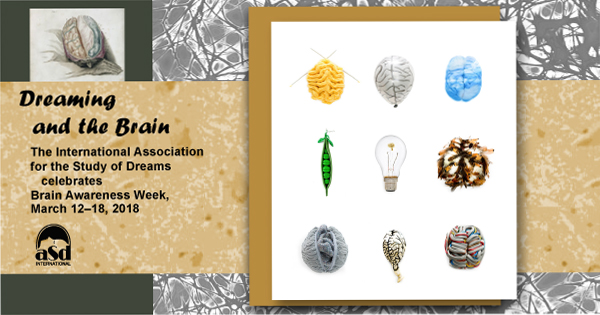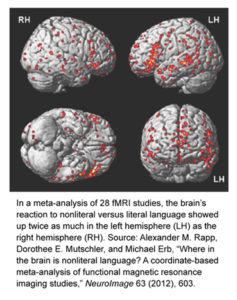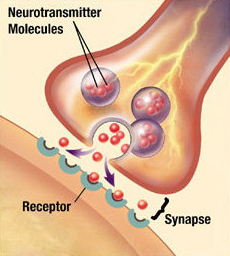
Metaphor in Dreams, Waking, and the Brain
One of the most common approaches to understanding dreams regards their content as verbal or visual metaphors.
“The dreamer is faced with the task of sparking across the metaphoric gap between dream image and waking reality,” wrote Montague Ullman in a 1996 paper, The Foundations of Dream Work.
Both Ullman and the Rev. Jeremy Taylor, among the strongest influencers of modern dream work since Carl Jung, considered metaphor central to understanding dreams. Ullman, a psychiatrist and psychoanalyst, pioneered enabling groups of nonspecialists in the community to support each other in understanding their dreams. Taylor, a Unitarian Universalist minister and founding member of the International Association for the Study of Dreams (IASD), was the greatest popularizer of nonspecialist dream groups. In both the Ullman and Taylor methods, the group members think about the dream that a member relates as though it had been their own. They comment on the feelings it evokes and what the content suggests to them metaphorically, thus offering the dreamer both empathy and a pool of ideas the dreamer might not have thought of. (Although the Ullman and Taylor methods are often conflated, Ullman’s limits this sort of “projection” of ideas to a brief stage at the work’s start, whereas Taylor’s is projective throughout.)
Psychiatrist Ernest Hartmann wrote in 1996 that dreams are explanatory metaphors in mostly visual form: “The dream pictures metaphorically the overall state – especially the emotional state – of the dreamer….‘I am drowning in a tidal wave’ is a metaphorical description for the emotional state of the dreamer involving terror and vulnerability.”
In a 1969 paper, Dreaming as Metaphor in Motion, Ullman proposed that the dream as a whole, in its “rapidly changing presentational sequences,” creates a unified, major metaphor, and that each element of the dream – the minor metaphors – sheds light on the implications. By giving form to abstract insights that are new to us, metaphor enables us to “take a conceptual leap forward.”
Often a key to understanding a dream metaphor is “day residue” – the bits of the waking day that are woven into the dream – because, Ullman wrote, “the individual’s equilibrium is upset in one of two ways by such an event. An area of ignorance may be uncovered…or an area of psychological vulnerability may be exposed….The day residue, reappearing in the dream, confronts the individual either with new and personally significant data, or forces a confrontation with heretofore unrecognized, unintended consequences of one’s own behavior” (punctuation added). By providing the opportunity to correct such situations, Ullman taught, dreams help us “repair the social fabric.”
It’s this centrality of metaphor to dream work that led me (a nontherapist, nonscientist) to attend a November 2017 event at Columbia University – Metaphors and Models: The Neuroscience of Comparison, sponsored by Columbia’s Presidential Scholars in Society and Neuroscience program.
Mapping
At the event, Dedre Gentner, a cognitive scientist at Northwestern University, described how conceptual metaphors map, or match up, characteristics between two systems. The two systems “don’t have to have surface features in common, but they do have to have a relational pattern in common….So something like ‘This book is a gold mine,’ which is a relational comparison, means roughly the book and the gold mine both are sources of something valuable.”
With this alignment, Gentner said, “whatever is in common between [the two systems being compared] will stand out, and we can use this to teach people things they don’t already know. Secondly, you can use one system to make inferences about the other.”
Framing and reframing
Stephen Flusberg, a cognitive scientist at Purchase College, State University of New York, studies social and political metaphors. Flusberg’s lab has found that the wording of a paragraph about police officers either as “guardians” or as “warriors” can change test participants’ opinion of law enforcement. To a small but statistically significant extent, the choice of metaphor “reframed” how test participants viewed the topic.
Mitt Romney’s 2012 U.S. presidential campaign issued a pamphlet comparing the federal budget to a household budget. When Flusberg’s team tested that comparison – emphasizing similarities with one group and differences with another – it found that emphasizing similarities left people more likely to say they’d vote in the way the brochure implied they should.
But if a person doesn’t know much about the “domain” against which the metaphor is making its comparison, the metaphor falls flat. “So when I say, ‘You know, this talk is a gold mine for useless information’…if you don’t know anything about gold mines, that metaphor is not going to shape how you think,” Flusberg said. Referring again to the federal budget example, he added, “It’s in that middle sweet spot where I think you find the most malleability, where people are interested in and know a little bit about that target domain but don’t know enough…to have their mind settled.”
Brain scans
When Alexander Rapp, a researcher in cognitive neuropsychiatry at the University of Tuebingen, entered his field in 2000, “it was almost common consensus that metaphor processing involves the right cerebral hemisphere,” while the left hemisphere was considered dominant for language because it processes vocabulary and grammar. That view of language “lateralization,” however, was derived mainly from studies of schizophrenics. Rapp’s first functional magnetic resonance imaging (fMRI) study told a different story: when the study participants, who were not schizophrenic, read the test’s metaphors, only the left hemisphere showed activation.
 In 2012, Rapp and colleagues published a meta-analysis of 28 fMRI studies of nonliteral language, including 17 of metaphor. fMRI measures changes in blood flow in the brain – so in this case, the differences in how the brain reacts to nonliteral compared to literal wording. The spots of activity seen in an fMRI scan, Rapp said, “might not be equally relevant or important.” However, the regions where they show up in metaphor are regions that conduct tasks such as selecting meanings, repressing irrelevant meanings, and integrating knowledge from multiple sources.
In 2012, Rapp and colleagues published a meta-analysis of 28 fMRI studies of nonliteral language, including 17 of metaphor. fMRI measures changes in blood flow in the brain – so in this case, the differences in how the brain reacts to nonliteral compared to literal wording. The spots of activity seen in an fMRI scan, Rapp said, “might not be equally relevant or important.” However, the regions where they show up in metaphor are regions that conduct tasks such as selecting meanings, repressing irrelevant meanings, and integrating knowledge from multiple sources.
In the studies analyzed, the left hemisphere responded to nonliteral language more than the right: 68% versus 32%; a similar ratio applied to metaphor specifically. “There is no such thing as a single metaphor module in the brain,” Rapp said, but a ridge referred to as the left inferior frontal gyrus is one area that seems particularly important to metaphor processing.
Historical baggage
Stephen Casper, a historian of science at Clarkson University, highlighted how metaphors about the brain have become so entrenched, they might subtly shape neuroscience itself.
 A prime example is that the chemicals that communicate across a synapse, or gap between two neurons, have been labeled transmitters and receptors. “These words themselves are so absolute now in the way we think about the neurosciences that it’s nearly impossible to see that originally they were metaphors. Historically they derive from the world in which telephones were invented,” Casper said. “And in this way the telephone emerged as a naively materialist model for how the nervous system functioned at the level of two neurons.”
A prime example is that the chemicals that communicate across a synapse, or gap between two neurons, have been labeled transmitters and receptors. “These words themselves are so absolute now in the way we think about the neurosciences that it’s nearly impossible to see that originally they were metaphors. Historically they derive from the world in which telephones were invented,” Casper said. “And in this way the telephone emerged as a naively materialist model for how the nervous system functioned at the level of two neurons.”
Applying to dreams
Casper and Flusberg mentioned linguist George Lakoff, author with Mark Jacobson of Metaphors We Live By, a classic in identifying metaphor as permeating human thought in specific clusters of meaning. Lakoff applied his theory to dreaming in 1993, in IASD’s journal Dreaming: “The metaphor system, which is in place for waking thought and expression, is also available during sleep, and plays a generative role in dreams….[It] provides a natural mechanism for relating concrete images to abstract meanings.”
Although none of the speakers mentioned dreams, each talk was pertinent to dreaming and dream work. Rapp’s meta-analysis, for instance, can likely inform future studies of metaphor in dreams.
The dreaming mind chooses its own metaphors, but with the same teaching and inference effects that Gentner described, and with the potential for reframing an issue, as Flusberg described. What a dream metaphor refers to is frequently not obvious; as dream group members say what the dream’s images remind them of, a suggested metaphor might “click” with the dreamer that would not have otherwise occurred to the person – thus reframing the issue, in effect teaching the dreamer something new about herself or her situation.
Casper identified a particularly stubborn neuroscience metaphor – brain as computer. Via email, psychologist Kelly Bulkeley confirmed that “the computer metaphor for the brain has given rise to the unfortunate idea that dreaming is merely a kind of ‘offline processing,’ and that’s not the kind of thing that major scientific resources are devoted to studying.”
Conversely, students of waking metaphor might find a useful data source in dreaming, such as the Sleep and Dreams Database that Bulkeley maintains. Bulkeley’s own wishes for future dream metaphor studies? “I’d like to see more systematic efforts to map the metaphors of dreaming onto people’s waking lives, perhaps by focusing on a recurrent dream motif (e.g., finding new rooms in a house) among many people, or by studying the dreams of a group of people in a very specific realm of activity (e.g., athletes, artists) and trying to identify the metaphors that relate to their waking-life specialties.”
………………………………………………………………………………………………………………………….
© 2018 Gloria Sturzenacker. Gloria Sturzenacker is an editor, writer, and information designer with a background in journalism and trained by Montague Ullman in the Ullman method of dream group leadership. She initiated and managed this first year of IASD involvement in Brain Awareness Week.
Banner images: (Center) “9 artworks depicting the brain,” by Sarah Grice. Wellcome Collection. CC BY. (Left) Plate 1. Sir Charles Bell, The anatomy of the brain, 1802. Wellcome Collection. CC BY.
The International Association for the Study of Dreams is a nonprofit, international, multidisciplinary organization dedicated to the pure and applied investigation of dreams and dreaming. Our members variously explore dreams through the sciences, the humanities, the arts, clinical applications, and their own experiences. See our website (ASDreams.org) for information on dream research, research grants, membership, and conferences. IASD is a partner in the global Brain Awareness Week campaign of the Dana Alliance, which offers a large selection of brain education materials on its website (dana.org/baw).

